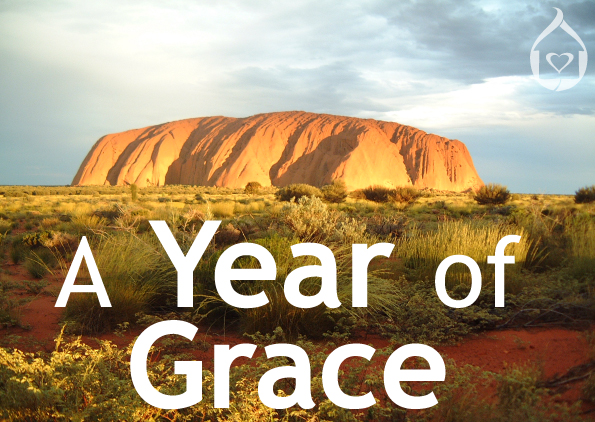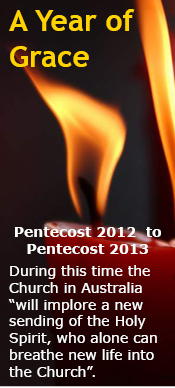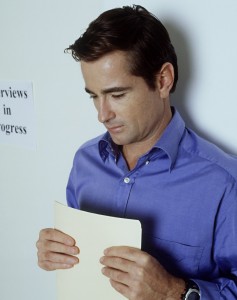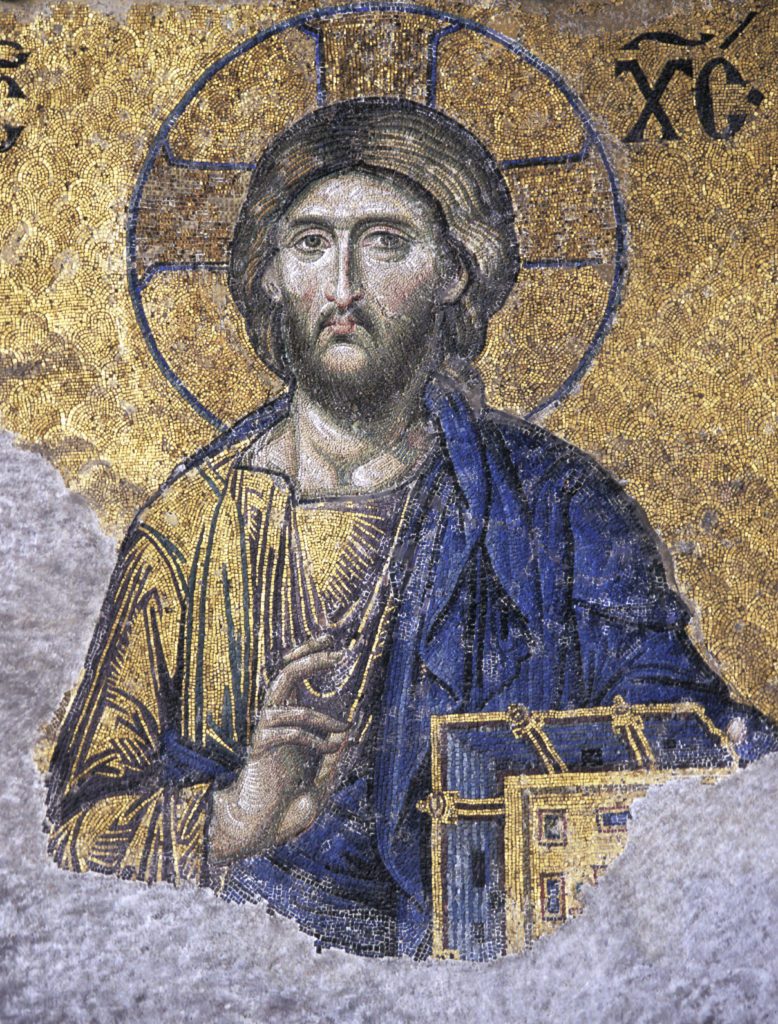A Year of Grace

On Pentecost 2012 Australian Catholics begin a ‘Year of Grace’: a time for all to deepen our relationship with Jesus.
 In a courageous and humble statement, Australia’s bishops have committed themselves to a year-long journey of prayer and repentance. They will each direct their focus and energies on the person of Jesus, with particular emphasis on the contemplation of the face of Christ. They have invited all Catholics to join them in this endeavour to go deeper into the mystery of Christ’s love.
In a courageous and humble statement, Australia’s bishops have committed themselves to a year-long journey of prayer and repentance. They will each direct their focus and energies on the person of Jesus, with particular emphasis on the contemplation of the face of Christ. They have invited all Catholics to join them in this endeavour to go deeper into the mystery of Christ’s love.
What is Grace and how do I get it?
“Hail Mary – Full of Grace”…We say those words so often, but have you ever wondered what they really mean? What is this ‘grace’ and why was Mary full of it?
At its simplest, graces are spiritual strengths given by God to help us live holy lives. These graces are many, like patience, humility, courage, awe, kindness, gratitude, self-control, generosity, serenity, trust and more.
Grace comes to us as a free gift… it is God’s blessing and gift to enrich our lives and strengthen us to live in holiness.
In fact, God is unrestrained in his generosity when it comes to grace. God yearns to bless us with all the graces we need to know his love for us deep in our hearts and to bring his love to others. God’s flow of grace is constant and is not dependant on our worthiness – God gives without discrimination or limit.
So you might ask, if that’s so, why do I sometimes lose my patience, fail to be honest or kind or have self-control? Where is God’s grace when I am tested by frustration or temptation?
 Why, when I need God’s grace most, does it seem so far from me?
Why, when I need God’s grace most, does it seem so far from me?
The answer is that God’s grace is a true gift, freely given. It is never imposed on us against our will. God respects our freedom to accept his grace or reject it.
The absence of grace in our lives does not come from God’s stinginess, but from our resistance. If we don’t have a particular grace, it is not because God is withholding it, but because we are blocking it in some way.
Praying for Patience
For example, when my children were young, I was prone to angry outbursts and bouts of impatience. I used to pray earnestly for serenity and patience, but I really didn’t want more patience; I wanted different kids!
Although I asked for patience, what I really wanted was for God to change my circumstances so that my patience would not be tested so much.
Was it any wonder then, that I didn’t get the patience I prayed for?
I learnt that if I want a grace, like patience, I needed to ask myself; what blocks do I have to this grace? Then I discover that I am afraid that if I really had more patience, I would be taken for granted; the kids would just go on making a mess, or ignoring my calls, and I would become a doormat.
Once I realised how I was blocking the flow of grace, I could have some real and honest prayer with God about my fears of being overlooked, unnoticed, unappreciated.
Effective Prayer
This is the kind of prayer that really works. When I pray like this, my heart softens and I become more open to receiving God’s grace. God meets me in my vulnerability and pours his love into me, releasing me from my fears so that the patience I need can have the chance to be expressed. It is genuine spiritual growth.
And the more I grow spiritually like this, the more freedom I have to receive even more grace from God.
So Mary is indeed ‘full’ of God’s grace, because she is perfectly, fully, completely open to God. She holds nothing back from God, puts no barriers up, and is utterly receptive to God’s grace. This is why she is a role model for us; as one who lives in perfect communion with God and fully open to God’s grace, we draw hope and inspiration from her example.
Bringing on the Grace
how do we become more grace-filled? Primarily it is through prayer in all its forms: the Sacraments, both formal and informal personal prayer, meditation, study of scripture, acts of service, penance, and many others.
A particular focus during this Year of Grace is the contemplation of the face of Christ.
It is in Christ’s face that we discover the great depths of his love for us. It is in his face that we see his yearning for us to have ‘joy that is complete.’
Contemplation
I remember how with each of our newborn babies, we would spend hours just gazing with wonder and love on them as they slept. There was no ‘activity’ or talking, just awe and a powerful sense of communion with God’s creative power. Contemplating the face (and the body) of Christ is a bit like this: there’s nothing to ‘do’ or ‘say’. It’s more a sense of just being and resting in Christ’s presence.
The Face of Christ
Meditation is the practice of stilling our thoughts so that we can become aware of God’s presence. Some people do this through deep breathing and relaxation, consciously letting go of distractions and inviting God into their awareness through a mantra like ‘maranatha’, which means
‘O Lord, come’.
Taize is a form of meditation, where the mantra is sung. The Rosary is another form, where the repetitive prayers allow us to sit with Mary and reflect on an aspect of Christ’s life. Having a usual focus such as an icon, holy picture or statue can be a valuable aid to meditation.
If this year we embark on an adventure to seek the face of Christ in new and deeper ways, God knows what gifts of peace and happiness might be in store for us. One thing is certain, that if we do some serious knocking, God will do some serious grace giving.
Authors: Marilyn Rodrigues & Francine Pirola
Sources and Links:
This article featured int he May 2012 edition of the CathFamily e-Magazine. For more articles, activities and recipies, check out:
- SmartLoving: Couple Prayer
- Meditation with Children
- Grace Before Meals


